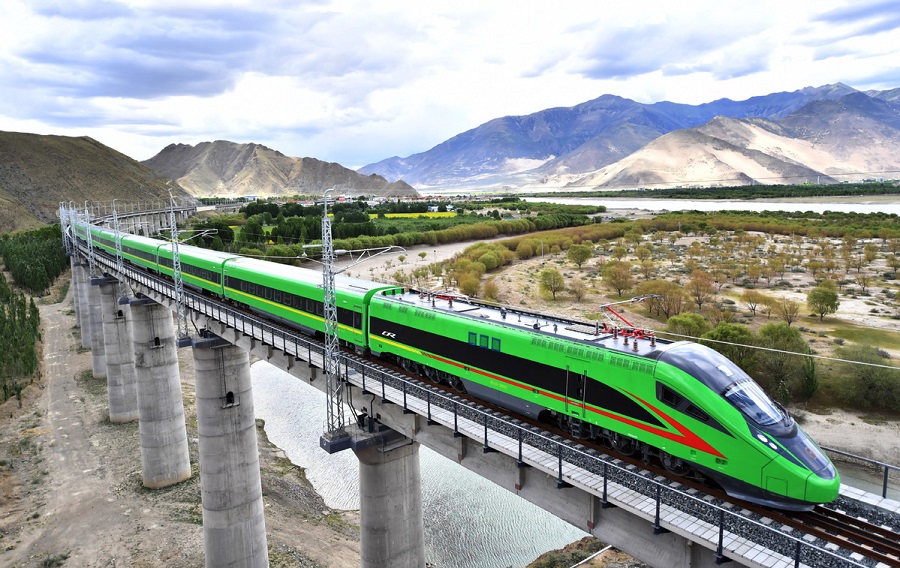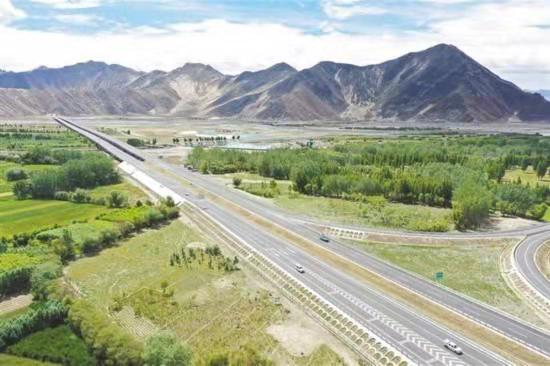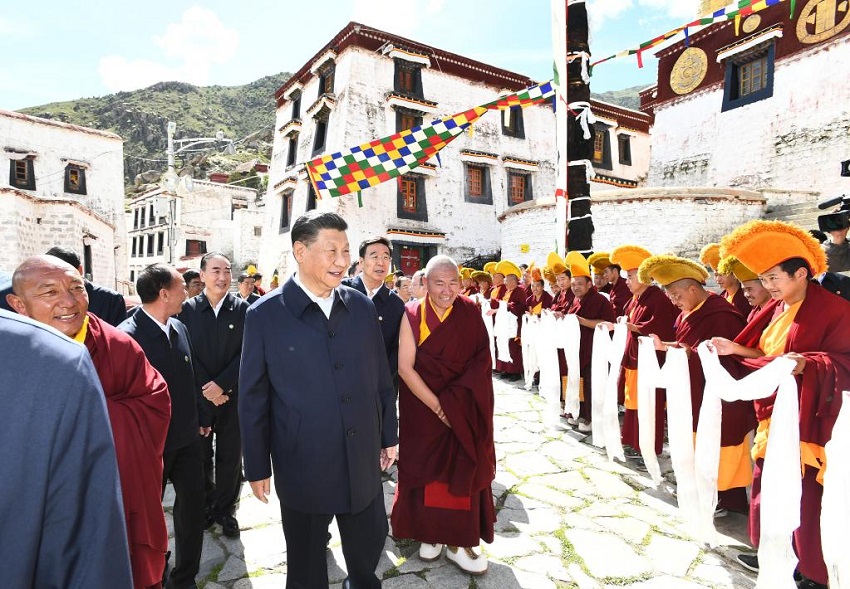Tibet: Rapid modernization during seven decades

By Ramesh Tiwari —
Tibet Autonomous Region of China has witnessed tremendous changes in social and economic development during the last seven decades after its liberation.
The year 2021 marks the 70th anniversary of the peaceful liberation of Tibet. The central government of the People’s Republic of China signed an agreement with the local government of Tibet on the peaceful liberation of the region on May 23, 1951, helping the people of Tibet break free from the imperialist invaders.
The Agreement of the Central People’s Government and the Local Government of Tibet on Measures for the Peaceful Liberation of Tibet, also known as the 17-Article Agreement, was signed in Beijing, officially proclaiming the peaceful liberation of Tibet.
2021 marks 70th anniversary of peaceful liberation of Tibet
Tibet Autonomous Region (TAR) is often called the ‘Roof of the World’ and the ‘Third Pole of the Earth’ due to its high altitude of over 4000 meters. Tibet boasts the world’s highest peak, the splendid Mt. Qomolungma, snow-capped mountains, glacials, highland lakes, source of many major rivers and the Tibetan Plateau.
As one of the five autonomous regions in the People’s Republic of China, Tibet Autonomous Region covers an area of more than 1.22 million sq. km. , one eighth of China’s land area.
TAR exercises jurisdiction over capital city Lhasa, six prefectures – Nagqu , Qamdo, Nyingchi, Shannan, Xigaze and Ngari , second largest city Xigaze and 71 counties.
More than 3.5 million people living in Tibet region have experienced a prosperous, culturally advanced, harmonious and new modern socialist Tibet during the last seven decades after its liberation.
The Tibet autonomous region has made historic achievements in urbanization over the past seven decades, and the people of the region have been enjoying heavily upgraded urban roads, housing, electricity and other infrastructures.
The economic transformation of Tibet in a short span of time was possible due to establishment of modern industries , development of transport and telecommunication service sectors , use of technology in agriculture , animal husbandry and environmental protection.
Modernization of Tibet region is in full swing after the country’s reform and opening-up policy in 1978.
Roads and railways have connected all parts of Tibet in recent years. The network of national highways, provincial, county, township and border roads have connected most of the parts of Tibet.
The Lhasa-Nyingchi Railway has brought new opportunities for rapid development in southeastern areas of the Tibet autonomous region after it started its operations on June 25 this year. The 435-kilometer railway links the Tibetan capital of Lhasa, Lhokha in southern Tibet, and Nyingchi in eastern Tibet.
The Lhasa-Nyingchi Railway, Tibet’s first electrified railway, is part of the planned Sichuan-Tibet Railway that will connect Lhasa and Chengdu, capital of neighboring Sichuan province.
Similarly, new airports are constructed in different parts of Tibet in recent years.
“Since late 2012, China has been expanding its infrastructure investment in Tibet. The region has launched a total of 130 air routes, with 61 cities connected by flights. The number of passenger trips made through these airports totaled 5.18 million in 2020.”
Airports in Tibet handled 3.07 million passengers in the six-month period of this year, according to Tibetan news outlets .
The new terminal of Lhasa Gonggar Airport will help the airport meet the target of handling 9 million passengers and 80,000 tonnes of cargo and mail by 2025, according to the airport.
Lhasa Gonggar Airport , located in Gonggar county of Shannan city and close to the regional capital of Lhasa, is the largest airport in Tibet.
The largest airport terminal in Southwest China’s Tibet autonomous region began operation on recently after more than three years of construction.
Millions of tourists visit Tibet region each year, which is regarded birthplace of Tibetan Buddhism boasting Potala Palace , Jokhang Temple, monasteries , ancient temples , Mount Kailash , traditional Tibetan culture and world heritages.
Tibet has set a target of receiving 61 million tourists annually and generating yearly tourism revenue of 64 billion yuan ($10 billion) by 2025.
The region recorded 17.58 million trips made by visitors in the first six months this year (2021 ) , while its tourism revenue was 17.95 billion yuan ($2.8 billion), according to Tourism Development Department.
The foreign trade of southwest China’s Tibet autonomous region has also increased each year having trade with more than 54 countries and regions worldwide.
President Xi Jinping laid out a new vision for ethnic unity, lasting peace and stability, and the high-quality development of the Tibet autonomous region, stressing the need to secure new achievements in ecological protection and sustainable growth in the plateau area, during his visit to Tibet region in July this year.
“A thousand years of darkness have dissipated in decades, and Tibet has broken free from its backward, autocratic, isolated past to embrace prosperity, democracy, and an open future. In a fast-changing society with a thriving economy, the Tibetan people lead better, happier lives. More united than ever, all the ethnic people in Tibet are pressing forward and contributing to the Chinese Dream of the great rejuvenation of the Chinese nation. In Tibet’s brighter future, the people of Tibet can be confident of enjoying better and more fulfilled lives, “according to State Council White Paper on the peaceful liberation of Tibet and its development over the past seven decades issued on May 21 this year.



Top Photo : Lhasa-Nyingchi railway, Tibet’s first electrified railway / Xinhua
August 18 , 2021














